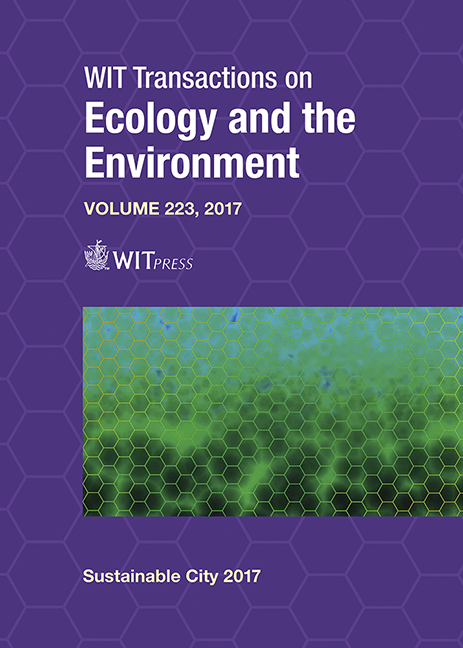URBAN REGENERATION WITH CARBON ECONOMY
Price
Free (open access)
Transaction
Volume
223
Pages
9
Page Range
125 - 133
Published
2017
Size
569 kb
Paper DOI
10.2495/SC170111
Copyright
WIT Press
Author(s)
BÜLENT YALAZI, TUĞÇE SÖNMEZ SANER, AYŞE ŞEYMA MANAP, EVREN SAYIN, ONAT ÇAĞATAY MUŞTA
Abstract
In Turkey, approximately 6.5 million dwelling units are deemed to be under disaster risks and it has become a government policy to rebuild this building stock. In order to fulfill the financial dimension of this urban regeneration attempt, the Ministry of Environment and Urbanization has developed a planning standard called “Sustainably Performed Urban Regeneration” SuPerUrban to mobilize the economies of sustainable living styles. Compared with the classical urban planning approaches, the environment friendly planning and urban design standard has focused on reducing the carbon footprint of the redevelopment and to create a new urban lifestyle in terms of the use of land, energy, water, natural resources and transportation. SuPerUrban reduces living costs of the households and local government expenditures and provide efficiencies that can be measured with the reduced percentage of the overall carbon footprint. Eventually, while being urban friendly it provides the means for the households to finance their share of the cost of regeneration with their reduced daily expenditures. In order to facilitate the model, carbon footprint calculation tool is developed to assist the project owners at both the neighborhood and building levels. Certain technology alternatives are provided to choose and compare the savings and reductions easily from the web. A pilot project is also developed using the standard and the tool in Eskişehir, Turkey. The technologies to be used in the project are intended to be produced in the area in order to provide jobs and create a green economy.
Keywords
Sustainability, Urban Regeneration, Ecological Labelling System, SuPerUrban





